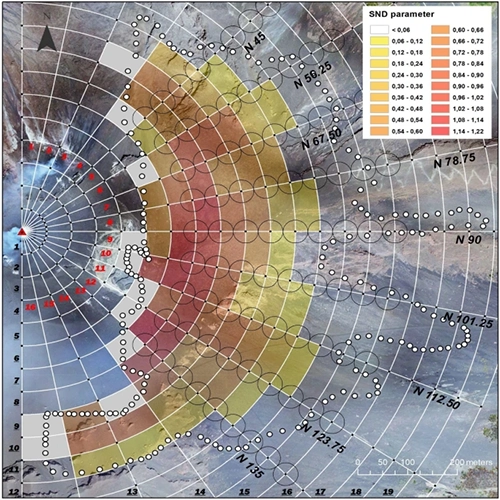High-resolution mapping and dispersion analyses of volcanic ballistics emitted during the 3rd July 2019 paroxysm at Stromboli

Bisson M., C. Spinetti, R. Gianardi, K. Strehlow, E. De Beni & P. Landi (2023).
Nature – Scientific Reports, 13, 13465, https://doi.org/10.1038/s41598-023-39600-w
Abstract
A detailed mapping of volcanic ballistic projectiles emplaced in a defined area, represents the starting point to derive preparatory data in hazard and risk studies of ballistics phenomena. Considering as case study the 3rd July 2019 paroxysmal eruption occurred at Stromboli volcano, we map and analyse at very high spatial resolution (8 cm) the distribution of the ballistic spatter clasts emplaced on the E flank of the volcano. The resulting map identifies and reproduces as geospatial polygon elements 152,228 spatter clasts with areal dimensions from 0.03 to 4.23 m2. Dispersed on 0.407 km2, the spatters cover an area of 29,000 m2 corresponding to an erupted products volume from 2.3 to 7.0 × 103 m3, calculated here for the first time. Spatial analyses indicate that the area mostly affected by the clasts emplacement is between N67.5 and N135 directions, identifying a preferential deposition between N112.50 and N123.75 directions. The clasts size distribution rapidly decreases with the size increase, highlighting a nearly constant ratio small/large clasts regardless the distance from the vent. Finally, additional investigations reveal that clasts dispersion parameters decrease progressively with the distance from the vent only along one direction (N67.5), highlighting how the morphology influences the deposition and remobilisation of mapped ballistics.


Devi effettuare l'accesso per postare un commento.